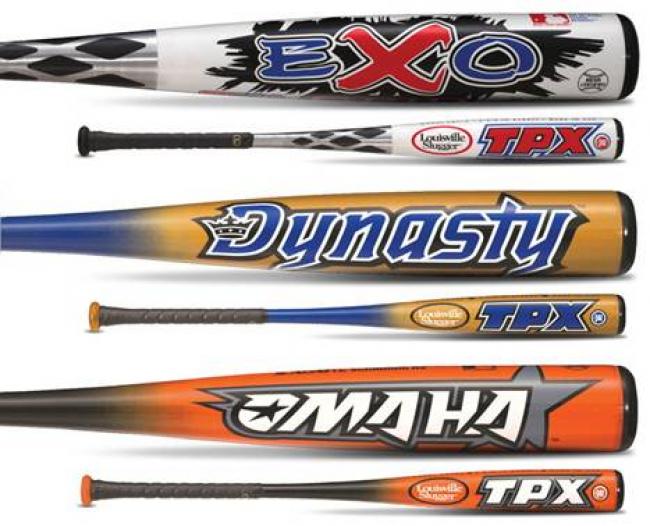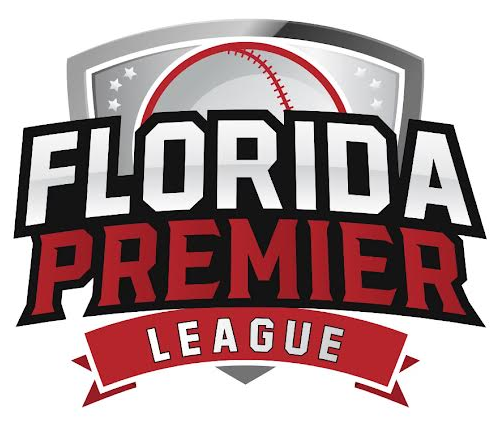
Posted On: 14 January, 2011

IMPORTANT USSSA BASEBALL AND SOFTBALL ANNOUNCEMENTS:
BAT STANDARDS
RESPONSIBILITY FOR ILLEGAL BATS
RISK OF INJURY
PROTECTIVE GEAR
INSURANCE AND DISPUTE RESOLUTION
JANUARY 10, 2011
Risk of Injury
The American games of Baseball and Softball have always had the risk of a player
(or even a coach or fan) being struck with a ball during a game (or even during
the warm up activities prior to a game). Unless the very nature of the game is
altered, it is hard to imagine the games of Baseball/Softball without some risk
of injury from batted or even thrown balls. Even with the best players in the
game and even before the advent of modern balls and modern bats (today's wood
bats being much better than the wood bats of yesteryear), injuries have occurred
and sometimes they have been serious. It was 1937 and one of the first All-Star
games was being played, perhaps the best pitcher of his day-Dizzy Dean-- was on
the mound when his career was ended with a batted ball injury. But while there
is and always has been some risk inherent in the games of Baseball/Softball from
being struck with a batted (or even thrown) ball, the games of Baseball and
Softball remain among the very safest sports in America.
Composite Bats
USSSA has been made aware in recent years that composite bats may become softer
and therefore perform better when used excessively, abused or damaged. And even
more concerning, it became clear that players can accelerate this improvement by
altering their bats. To address this issue, USSSA has passed stringent penalties
for the use of altered bats and is in the process of making available
compression testing machines for under $500 for use by ball parks and players
alike to determine when bats become too soft. In slow pitch Softball, USSSA has
reduced the compression of the ball to half of what it once was, has reduced the
COR by over 20% and changed the pitching rule to allow the pitcher to release
the ball from as much as 6 feet behind the otherwise designated pitching plate
which is 50 feet from home plate. No such changes were made to USSSA licensed
baseballs as the Bat Performance Factor ("BPF") for Baseball is significantly
lower than that of softball: 1.15 BPF for Baseball and 1.20 BPF for Softball. But for certain youth Baseball ages, USSSA has
used a 50 foot pitching distance instead of 46 foot and has lengthened the base
paths from 60 feet to 70 feet to allow the game to have the room to be played as
it was traditionally designed.
The New Mark
In addition, USSSA has now implemented new rules for testing bats before a
manufacturer can license its bats for use in USSSA play. Under the new rules,
bats will no longer be licensed for USSSA play if they can significantly improve
beyond the BPF standard with use, abuse or damage. Beginning in the fall of
2011, such new engineering standard bats will carry a new and very prominent
USSSA mark. In addition, the manufacturers will be required to address the issue
of making bats that are less susceptible to alteration before the new mark can
be used. While other sanctioning bodies have chosen to ban older composite bats,
USSSA has determined that it would be grossly unfair to disallow a bat with no
notice to the retailers, manufacturers and customers who had previously relied
on USSSA rules in the sale or purchase of a bat.
Protective Gear
The current bats first pose a clear competitive imbalance issue and to a much
lesser extent a risk of injury issue. The use of too soft bats by some players
and not others is an unfair advantage which USSSA believes must be removed from
the game. In addition, it has been argued that such bats may increase the risk
of injury from a batted ball. Even with the current composite bats in play
during recent years, it remains the statistical and insurance experience of
USSSA that the games of Softball and Baseball remain among the safest athletic
activities in America. However, this does not mean there is no risk of injury
from a batted ball. There is, and always has been, risk inherent in the games of
Baseball and Softball from being struck with a batted (or even thrown) ball.
Even when the new mark bats are the only bats allowed in USSSA play, a risk of
injury from a batted (or thrown) ball will still exist. Anyone who has a concern
about an injury occurring from being struck wit
h a ball during USSSA Softball or Baseball sanctioned play should address that
concern by the use of protective gear which is available and has always been
allowed in USSSA sanctioned play.
Insurance and Dispute Resolution
In addition, USSSA makes available at reasonable rates insurance for teams and
players who do not otherwise have insurance to cover the risk of accidental
injury from playing USSSA sanctioned Baseball or Softball. If a player or coach
does not otherwise have such insurance, it would be only prudent to purchase
insurance to cover such risks. If you choose not to be prudent, but to attempt
to create a legal liability for USSSA or its officials for such accidental
injuries arising from the inherent risks of the games of Baseball or Softball,
you should be aware of the USSSA Constitutional provision which bans anyone
involved in a lawsuit against USSSA or its officials from ever again
participating in a USSSA sanctioned event. In addition, by policy USSSA does not
allow anyone who is threatening legal action against USSSA to participate in any
USSSA sanctioned event until such threatened legal action has been resolved to
the satisfaction of the USSSA Board of Directors. To be clear, USSSA simply does not want or need the participation of anyone who thinks
that an amateur athletic rule dispute or injury issue should be resolved by
threatening or hiring legal counsel. For those who disagree with this approach,
there are a large number of other sanctioning bodies under which you can play
Softball or Baseball and USSSA would truly prefer that you played elsewhere.
Working with USSSA on Dispute Resolution
Where there is a real allegation that USSSA or its officials have not properly
decided the application of a rule, there is a rigorous set of procedures for the
protection of teams and players. USSSA encourages you to work through the
system to resolve any real concerns that you may have in the application of
USSSA rules and will assist you in such efforts. In addition, if you sincerely
believe that USSSA or a USSSA official was responsible by negligence or
intentional wrongdoing for an injury, USSSA does have insurance for such
actions. If the claim is legitimate, please contact USSSA and USSSA can assist
you in the filing of such a claim with its insurance carrier.
Altered, Damaged and Too Soft Bats--Player, Parent and Coaches Responsibilities
By allowing for a grandfather period for old bats, USSSA believes that the new
bats with the new mark will make for a clean break that will make administration
of the new rules feasible for umpires and directors. Any approach that requires
umpires or directors to closely inspect bats to see if they are metal or
composite or if their model number is on a list, is in USSSA's experience and
view unworkable. Indeed, if the administration of a system for eliminating old
bats is unworkable, such an approach may increase the competitive imbalance
concern rather than reduce it and surely will take away from precious playing
time with wasted administrative time at the ballpark. For now, it remains first
the responsibility of the player (and for youth players, their parents) and
their coaches to make sure that altered bats, damaged bats or bats that have
clearly become too soft are not used in USSSA Baseball or Softball sanctioned
play. In addition, while USSSA is sure that there will
always be a way to cheat and alter a bat, USSSA views the manufacturers of bats
as the ones who, after the coaches and players, can best stop the altering of
bats by anticipating the ways in which their bats may be altered.
USSSA Penalties for Those Who Cheat
USSSA for its part will continue to enforce harsh penalties for those who cheat,
but there is simply no way for USSSA umpires and directors to stop the use of
altered, damaged or too soft bats without the cooperation and attention of the
players, parents, coaches and manufacturers. Once the new mark has been
implemented and the manufacturers have improved their bat designs to reduce
altering and eliminate the potential for bats getting too soft/good with use or
damage, USSSA will continue its vigilance in finding and punishing those who
cheat. USSSA will do so with a system designed to make enforcement by umpires
and other event officials consistent and easy to implement without excessive
disruption of the game itself. In any event, however, there will always be the
possibility of cheating and of an injury occurring from a batted ball. Again,
anyone who has a concern that the risk is too high should wear the protective
gear that they deem appropriate and should know that USSSA rules will continue to allow such gear.
Stopping the Use of Illegal Bats-A Shared Responsibility
Where USSSA finds cheaters, it will continue to impose harsh suspension
penalties. USSSA, however, has decided not to impose penalties on innocent
retailers and customers where such can be avoided with reasonable grandfathering
rules for old bats. Again, USSSA has also determined that it does not make sense
to pass the complete burden of enforcement on to umpires and event directors who
are simply in no position to take on such roles. It remains the view of USSSA
that players, parents, coaches and manufacturers must share in this effort with
sanctioning bodies to insure that the games of Baseball and Softball are played
with legal and sensible equipment. Indeed, it is the primary responsibility of
the players, parents and coaches to make sure that illegal bats are not used in
USSSA play.
************************************************************************
This email was sent from www.usssa.com . If you would like your email address
removed from
our system forward this email to support@usssa.com and change the subject to
Remove.
USSSA physical mailing address is 611 Line Drive, Kissimmee, FL 34744
Our National headquarters telephone number is 321-697-3641
************************************************************************
Mail-A3486

